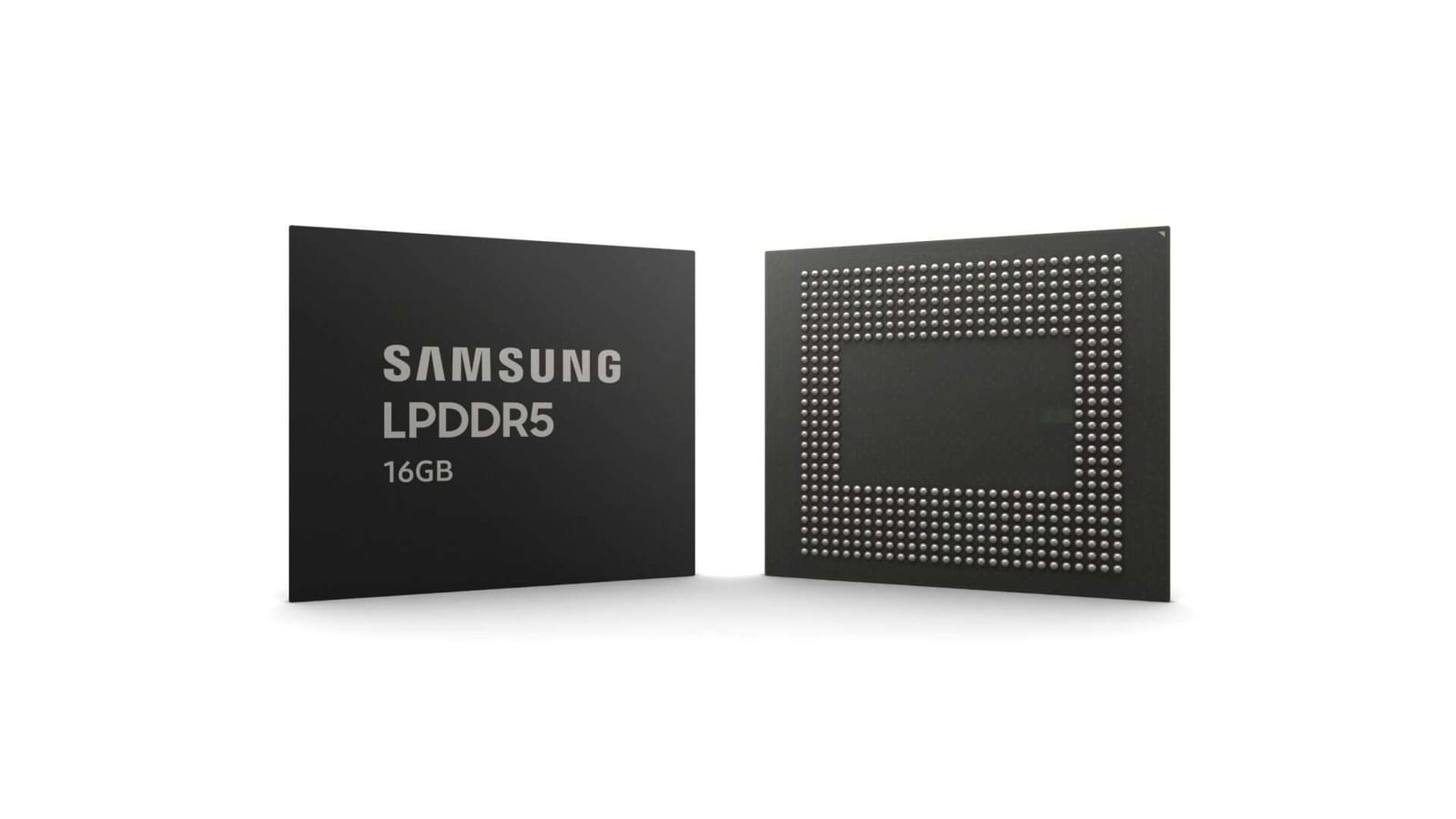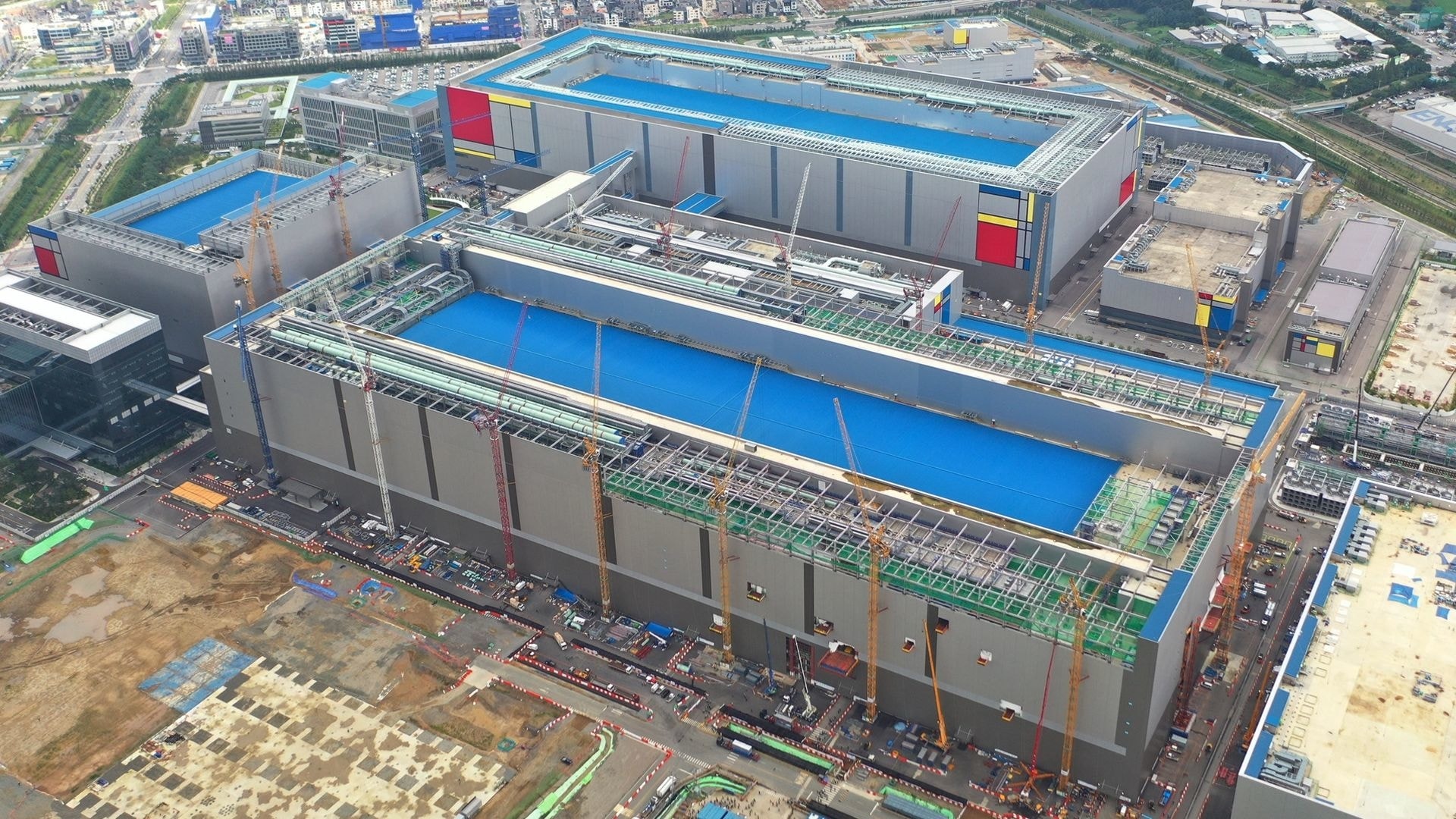Samsung begins mass production of 16Gb LPDDR5 DRAM, uses extreme ultraviolet technology
Samsung says its new LPDDR5 is about 16% faster than the 12Gb LPDDR5 (5,500Mb/s) found in modern mobile platforms.

Even as Samsung's smartphone business may have contracted in the last few months, its chip business has remained strong. The company is now readying for the next year's flagship that will come with 5G and more powerful specifications. To support those phones, Samsung has begun mass production of what it calls “industry's first 16-gigabit (Gb) LPDDR5 mobile DRAM.”
The Korean giant is also taking a rather interesting approach to the production of these chips – using extreme ultraviolet (EUV) technology. As the name implies, it uses lasers and light-sensitive chemicals to embed silicon on the chip. The technology is said to help Samsung overcome a “major developmental hurdle” in scaling RAM at advanced nodes. Samsung claims the chip offers the highest speed and largest capacity available in mobile DRAM.
ALSO READ: IBM rolls out newest processor chip, taps Samsung for manufacturing
Samsung's new chip is based on the third-generation 10nm-class (1z) process. The chip supports up to 6,400 megabits per second (Mb/s) and is claimed to be 16% faster than the commonly used 12Gb LPDDR5 RAM which can deliver up to 5,500 Mb/s speed. When packaged into a 16GB module, the new Samsung chip can transfer 10 5GB-sized full-HD movies, or 51.2GB of data, in one second.
Apart from faster speeds and performance, Samsung has also managed to achieve a breakthrough in the form factor of the chip. It claims the LPDDR5 package is about 30% slimmer than the predecessor and brings support for 5G and multi-camera setups. It also enables foldable phones to pack more features while keeping the build slimmer.
The 16Gb LPDDR5 can build a 16GB package using only eight chips, significantly lesser than the predecessor that required 12 chips (eight 12Gb chips and four 8Gb chips) to provide the same capacity.


“By delivering the first 1z-based 16GB LPDDR5 package to global smartphone makers, Samsung plans to further strengthen its presence in the flagship mobile device market throughout 2021. Samsung will also expand the use of its LPDDR5 offerings into automotive applications, offering an extended temperature range to meet strict safety and reliability standards in extreme environments,” said Samsung in a post.
ALSO READ: Samsung Galaxy Z Fold 2 new colour combinations, full specs surface ahead of Sep 1 launch
Apart from a new chip, Samsung has also announced the expansion of its manufacturing capacity at Pyeongtaek Complex.
Spread across 128,900 square meters (over 1.3 million square feet), the Samsung Pyeongtaek Complex Line 2 is said to be equivalent to about 16 soccer fields. This is the third-largest semiconductor production line from Samsung thus far.
“The new Pyeongtaek line will serve as the key manufacturing hub for the industry's most advanced semiconductor technologies, delivering cutting-edge DRAM followed by next-generation V-NAND and foundry solutions, while reinforcing the company's leadership in the Industry 4.0 era,” the company added.
Catch all the Latest Tech News, Mobile News, Laptop News, Gaming news, Wearables News , How To News, also keep up with us on Whatsapp channel,Twitter, Facebook, Google News, and Instagram. For our latest videos, subscribe to our YouTube channel.
























